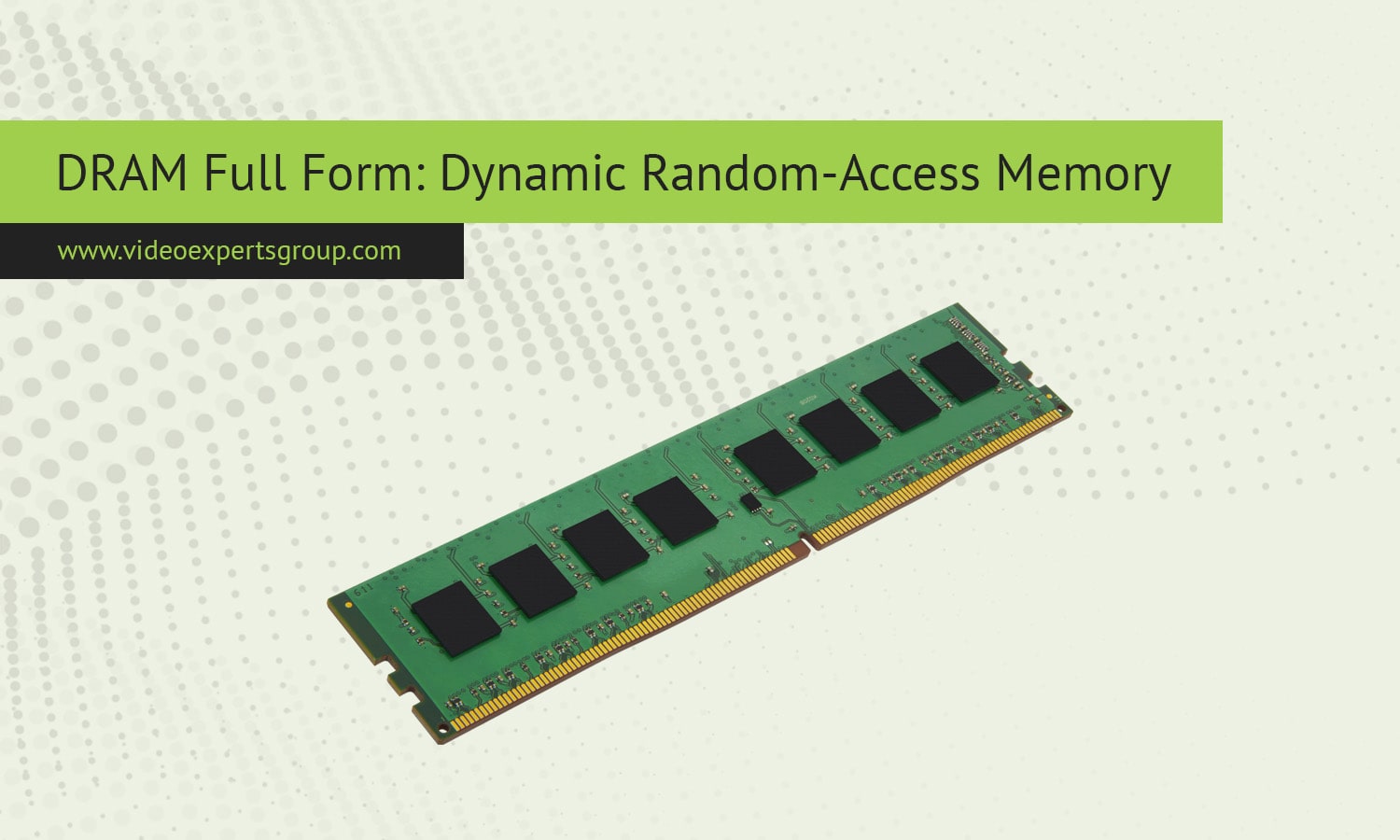Dynamic Random-Access Memory, abbreviated as DRAM, is one of the most fundamental types of memory used in modern computers and electronic devices. Its role is crucial in determining the performance of devices like desktops, laptops, smartphones, and gaming consoles. DRAM is known for its fast data access speeds, making it ideal for applications that require quick read and write operations. Despite being a form of temporary, volatile memory, it is indispensable in ensuring that modern computing devices can handle multitasking, run applications, and access data efficiently.
Meaning
DRAM stands for Dynamic Random-Access Memory, a type of volatile memory that temporarily stores data needed by the CPU for ongoing tasks. The term "dynamic" refers to the fact that DRAM requires constant refreshing to retain its data. This means that the data stored in DRAM is continually refreshed with electrical charges, typically thousands of times per second, to avoid losing the information. The "random-access" part of its name means that data can be read or written in any order, without needing to follow a specific sequence, which allows for quick data retrieval.
Unlike permanent storage devices such as hard drives or solid-state drives (SSD), DRAM is cleared as soon as the power is turned off. Its main advantage is speed; DRAM provides much faster data access than long-term storage devices, making it essential for the smooth running of active applications and processes.
What is DRAM Used For?
DRAM is primarily used in devices where fast data access is critical for performance. Here are some of its most common uses:
-
System Memory (RAM in PCs and Laptops): DRAM serves as the main memory in computers and laptops, where it stores the operating system, applications, and the active data being used. This allows the processor to quickly access the information it needs to perform tasks.
-
Smartphones and Tablets: Modern mobile devices use DRAM to enable fast application switching, handle multiple tasks at once, and load data-heavy apps like games or video editing software.
-
Graphics Cards: High-performance graphics cards for gaming and video rendering use DRAM to store textures, frames, and graphical data to ensure smooth visuals and faster rendering times.
-
Servers and Data Centers: DRAM is used in servers to manage large workloads, including databases, virtualization, and big data processing. Its ability to quickly load and manipulate large datasets is key in these environments.
-
Embedded Systems: DRAM is also found in various embedded systems, such as automotive electronics, industrial equipment, and consumer electronics, where fast data access is required for real-time processing.
DRAM Frequency
The frequency of DRAM, often referred to as the "clock speed" or "memory speed," is a measure of how fast the memory can process data. DRAM frequency is expressed in Megahertz (MHz) and indicates how many cycles per second the DRAM can perform. Higher frequency typically translates to faster data transfer speeds between the DRAM and the CPU, which can lead to better system performance, especially in tasks like gaming or video editing.
Here are some common DRAM frequencies:
-
DDR3 DRAM: Frequencies range from 800 MHz to 2133 MHz. This older type of DRAM was widely used in PCs and laptops before DDR4 became the standard.
-
DDR4 DRAM: Frequencies typically range from 1600 MHz to 3200 MHz or higher. DDR4 is the current standard in most modern computers and offers significant improvements in performance and power efficiency over DDR3.
-
DDR5 DRAM: Frequencies can go up to 6400 MHz or higher, making it suitable for the latest high-performance systems. DDR5 offers even greater speed and efficiency, but it is typically more expensive than DDR4.
The higher the DRAM frequency, the more data it can move in a given period, which can significantly improve the performance of applications that rely on large datasets or complex calculations.
FAQ
Understanding DRAM is crucial to optimizing your device’s performance. Whether you're upgrading your PC, purchasing a new laptop, or building a gaming rig, choosing the right DRAM can significantly enhance speed and efficiency. With continuous advancements like DDR5, DRAM technology continues to evolve, offering even better performance for the next generation of computing tasks.
















